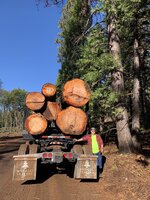- Messages
- 2,127
- Reactions
- 5,105
Follow along with the video below to see how to install our site as a web app on your home screen.
Note: This feature may not be available in some browsers.
It's not a sign of things to come.I hope it isn't a sign of things to come
Lumber prices are stupid and no one has been building for years.It's not a sign of things to come.
It's a sign of what's already here.
Do you have any idea how timber harvesting really works?.....dumb question on my part as your statement says you do not. Harvest plans and timber management have changed in the last forty years that keep the forests safer for wildfires, keep a steady supply of timber in rotation, and better utilize the available water to maximize growth.You can only rape the resources for so long before the well runs dry same as the fishing these are facts
